| Kawasaki Heavy Industries & CRRC Sifang C151A | |
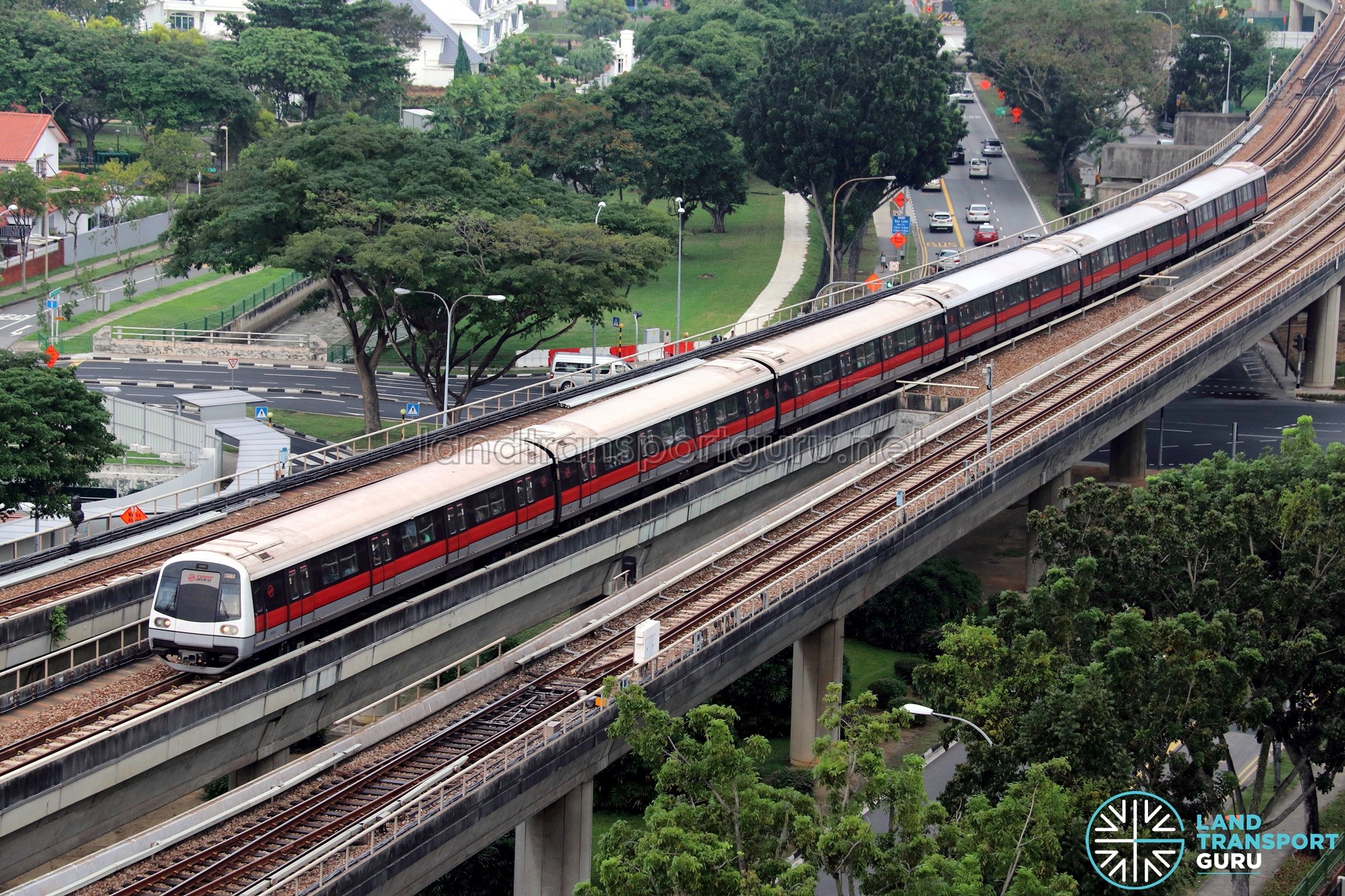 |
|
| In service | May 2011 – Present |
| Manufacturer | Kawasaki Heavy Industries with CRRC Sifang |
| Constructed | 2010 – 2014 |
| Number built | 210 Vehicles (35 trainsets) |
| Formation | 6 cars per trainset DT–M1–M2–M2–M1–DT |
| Fleet number | 501/502 – 569/570 |
| Operators | SMRT Trains |
| Depot(s) | Bishan, Changi, Tuas and Ulu Pandan |
| Line(s) served | North South Line & East West Line |
| Technical Data | |
| Car body | Aluminium-alloy double-skinned |
| Doors | 8 per car |
| Electrification | 750 V DC Third rail |
| Track gauge | Standard Gauge (1435mm) |
The Kawasaki Heavy Industries & CRRC Qingdao Sifang C151A is an electric multiple unit (EMU) train operating on the North South Line (NSL) and East West Line (EWL). Entering service in 2011, these were the fourth generation of rolling stock, purchased to increase the capacity of both lines by 15%.
Thirty-five trainsets comprising six cars each were procured in two batches, manufactured in Qingdao, China from 2010 to 2014 by a consortium of Kawasaki Heavy Industries and CRRC Sifang. 22 trains were delivered in 2011–2012, and 13 trains were delivered in 2013–2014.
Background
Contract 151A (C151A) for the supply of 22 trainsets for the North South and East West Lines was initiated to complement the Jurong East Modification Project, which added an extra platform at Jurong East MRT Station for the faster turnaround of North South Line trains, thereby increasing the capacity of the line.
Awarded to a consortium of Kawasaki Heavy Industries and CSR Qingdao Sifang (now CRRC Qingdao Sifang) at an approximate value of S$368 million, these trains were built in Qingdao, China. The C151A contract was the first successful joint venture between these two companies. Despite tender competitor Hyundai Rotem Company’s offer of S$323 million, LTA chose to award the bid to Kawasaki Heavy Industries-CRRC Sifang after a comprehensive evaluation in hopes of better product quality.
In 2012, 13 additional trains were purchased by LTA under Contract 151A (Variation Order), bringing the total number of trains to 35. These additional trains were built to the exact same specifications and entered service in 2013–2014.
Each 6-car train is actually two 3-car trainsets coupled together, each comprising of a Driving Trailer (DT) and two Motor Cars (M1 and M2).
History
These trains entered revenue service on 27 May 2011, the same day the new North South Line (NSL) platform was opened at Jurong East as part of Jurong East Modification Project. Following the C751B and refurbished C151 trains, it was also painted in a scratch-resistant black base coat, with a central red stripe and lower grey band running the length of the train. Like the C751B, the front of the train was sloped to create a streamlined look. On the interior, each car featured a different colour scheme, namely fuchsia, cobalt blue and turquoise (and a lighter shade for the middle 3 seats), from each end to the middle cars. These trains were also fitted with the SMRT Active Route Map Information System (STARiS) at launch, with ceiling-mounted Vacuum Fluorescent Displays (VFD) displaying text and 8 active route maps mounted above every door in each car.
Between 2014 and 2015, all C151A trains were upgraded with Thales SelTrac Communications-Based Train Control (CBTC). Additional signalling equipment was installed at both ends of every train, replacing 2 seats at each end with a signal box.
Current Design
All C151A trains are comprised of six cars with open gangway connections between all cars. Each car has eight doors, four on each side. The interior features longitudinal seating in three colors: fuchsia, cobalt blue and turquoise from the end cars to the middle cars. Priority seats are located in every car, near the doors. All trains are equipped with STARiS, SMRT’s active route information system comprising ceiling-mounted textual displays and active route maps above every door.
For the interior, the trains have three-branched stanchion poles and three rows of handgrips. The poles were also fashioned in a larger diameter as compared to older trains. Two wheelchair bays are installed on every train, near doors 12 and 13.
Emergency Exits are located at both ends of every train, with a ramp that can be deployed in an emergency. Within the cabin, Emergency Communication Buttons are located at the side of the train doors, enabling passengers to speak with staff in an emergency. Fire extinguishers are also placed in every car.
Train Formation
A six-car trainset is formed of two three-car sets permanently coupled together. Each set comprises one driving trailer (DT) and two motor cars (M1 and M2). As such, the running configuration of a C151 trainset is DT–M1–M2–M2–M1–DT.
Every car is identified by a four-digit number ranging from x501 to x570, where the first digit x is a carriage identifier. The driving cab is 3, followed by the second car using 1 and the third car using 2. The last three digits refer to the 3-car trainset of which the train is comprised. SMRT’s 35 trains are actually 70 3-car trainsets coupled together in an even-odd arrangement, i.e. Set 501/502, Set 503/504 and on to Set 569/570.
As such, a sample Set 501/502 will contain the carriage numbers 3501-1501-2501-2502-1502-3502. Depending on the direction of travel, the sequence may be reversed.
All sets were co-built by Kawasaki Heavy Industries Rolling Stock Company and CRRC Sifang Locomotive & Rolling Stock Co., Ltd. Kawasaki was responsible for the overall project management, design, manufacturing of bogies and procurement of major components. CRRC Sifang was in charge of manufacturing the train cars, final fitting and assembly of complete MRT trains and factory testing. Kawasaki (Singapore) was responsible for the delivery of complete MRT trains to the depot, on-site testing and commissioning. According to the Kawasaki Technical Review (Issue 177) on Rolling Stock Engineering, this project structure was described as improving Kawasai’s competitiveness combining its technological capabilities with Sifang’s low-cost production capacity.
Full Specifications
| Composition | DT-M1-M2-M2-M1-DT DT: Driving Trailer (unpowered); M1/M2: Motor car |
| UIC Classification | 2’2′ + Bo’Bo’ + Bo’Bo’ + Bo’Bo’ + Bo’Bo’ + 2’2′ |
| Number built | 210 cars (35 trains) |
| Manufacturer | Kawasaki Heavy Industries / CRRC Qingdao Sifang |
| Specifications | |
| Electric traction control | IGBT-VVVF Inverter Control (Fuji Electric) with Regenerative Braking |
| Traction motor | Three-Phase AC Induction Motor (Fuji Electric) |
| Power output | 2,240 kW (combined) |
| Transmission | WN Drive coupling |
| Acceleration | 1.0 m/s2 |
| Deceleration | 1.2 m/s2 (service); 1.3 m/s2 (emergency) |
| Auxiliary power | IGBT–VVVF Auxiliary Inverter with battery charger |
| Electrification | 750V DC (nominal) from third rail |
| Gauge | Standard gauge (1435mm) |
| Maximum Speed | 90km/h (design); 80km/h (service) |
| Braking system | Dynamic braking, Electronically controlled pneumatic brakes |
| Safety system | Current: Thales SelTrac® Moving Block CBTC ATC with subsystems of ATO GOA 3 (DTO), ATP, NetTrac ATS, CBI Past: Westinghouse Brake and Signal Company Ltd fixed block ATC with subsystems of ATO GOA 2 (STO), ATP, ATS |
| Coupling system | Scharfenberg |
| Track gauge | Standard gauge (1,435 mm) |
| Construction | |
| Car body | Aluminium-alloy double-skinned construction |
| Length | 139m (6 car train) — 23.83m (DT); 22.80m (M1/M2) |
| Width | 3.2 m |
| Height | 3.7 m |
| Weight | 226.8t (unladen); 335.9 t (laden) |
| Doors | 1.45 m wide, 8 per car, 4 per side |
| Seats | 292 seats (6 car train) |
Accidents & Incidents
On 29 Jan 2014, Set 549/550 derailed within Bishan Depot while undergoing testing. It was unclear how the incident occurred.
See Also: China-made MRT trains recalled due to cracks
On 5 July 2016, Hong Kong-based watchdog journalism outlet Factwire reported that 26 out of 35 China-made C151A trains have been recalled due to cracks. These six-car trains, totalling 156 cars, were found to have cracks in the structure connecting the car body and the bogie after they were delivered in 2013. Details of the defects and the recalls have been kept secret in both Singapore and China.
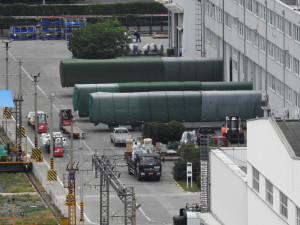
In the saga that followed, the issue became a talking point among many Singaporeans over the quality of Chinese-made vehicles, many criticizing the Government’s decision to purchase China-made trains when European and Japanese-made trains have been operating reliably on the North South and East West Lines since their introduction in the late 1980s. It also came as a surprise to many that a foreign news outlet would break news of such public interest while SMRT and LTA had been keeping mum about these problems.
Later, LTA clarified that defective trains were being shipped back to China — one at a time — for repairs from July 2014 for the replacement of the entire car-body shell under warranty, including the cost of transport to and from China. As of July 2016, five trains have been fixed and returned to service while a sixth train was undergoing repair works. The repair process takes four-months per train car, and rectification work is expected to be completed in 2019.
Collision at Joo Koon MRT Station
On 15 November 2017 at 0820hrs, trainsets 535/536 & 547/548 collided at Joo Koon MRT Station under the new signalling system.
Main Article: MRT Trains Collide at Joo Koon
Gallery:
See Also:
External Links & References
- Award of Contract 151A; 22 new trains for North-South / East-West lines
- Two carriages of MRT train still under testing derail – Straits Times
- Kawasaki Technical Review (Rolling Stock Engineering) (kawasaki.com)
Back to Trains
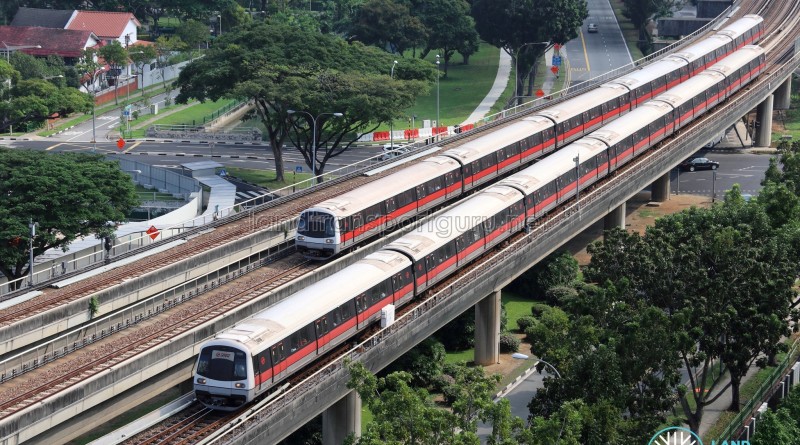
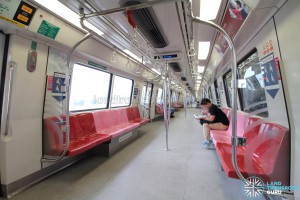
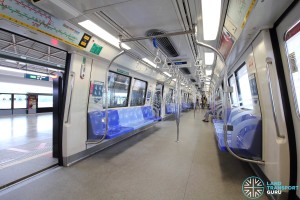
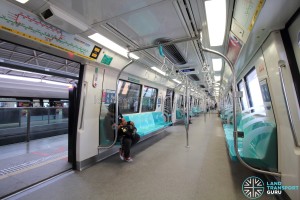
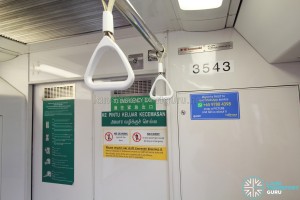
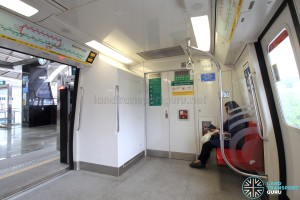
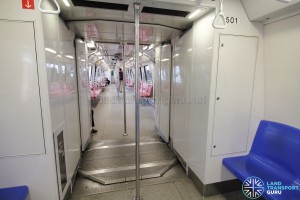
Will it be refurbished though?
No. It won’t be refurbished. This is my answer for the question